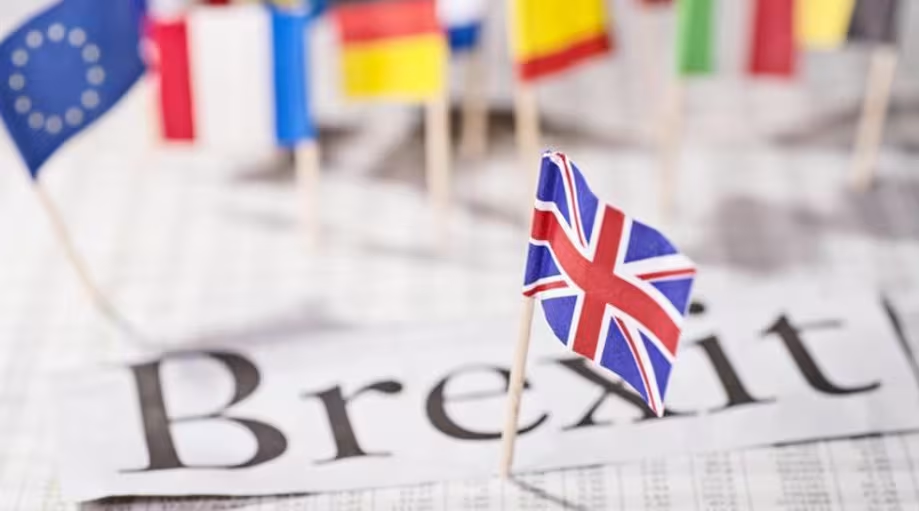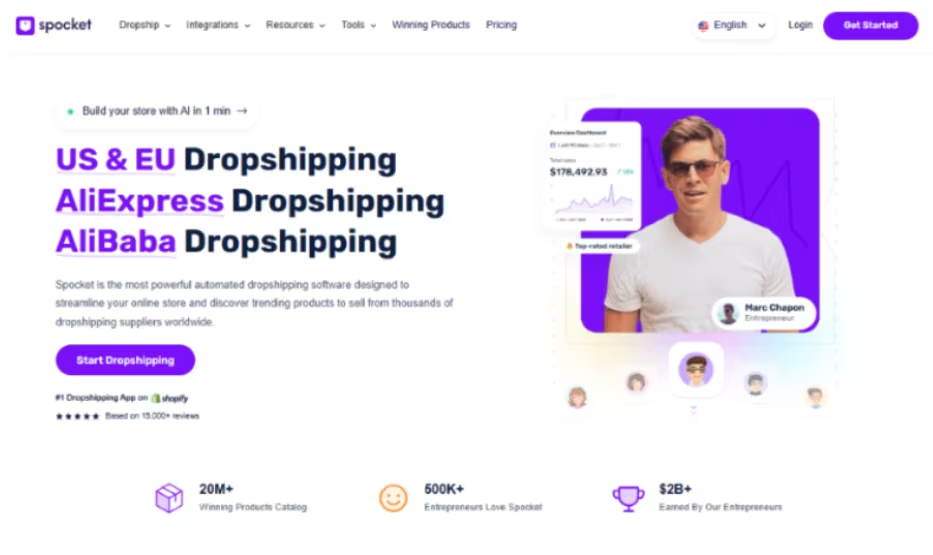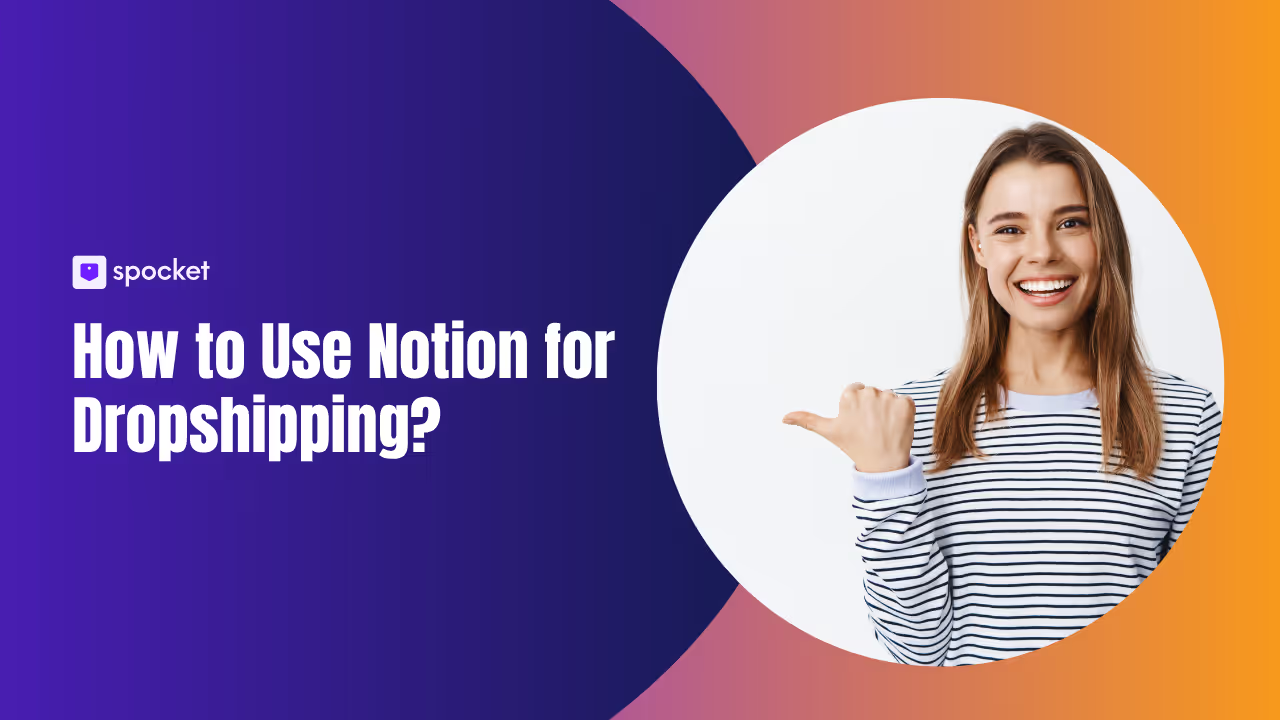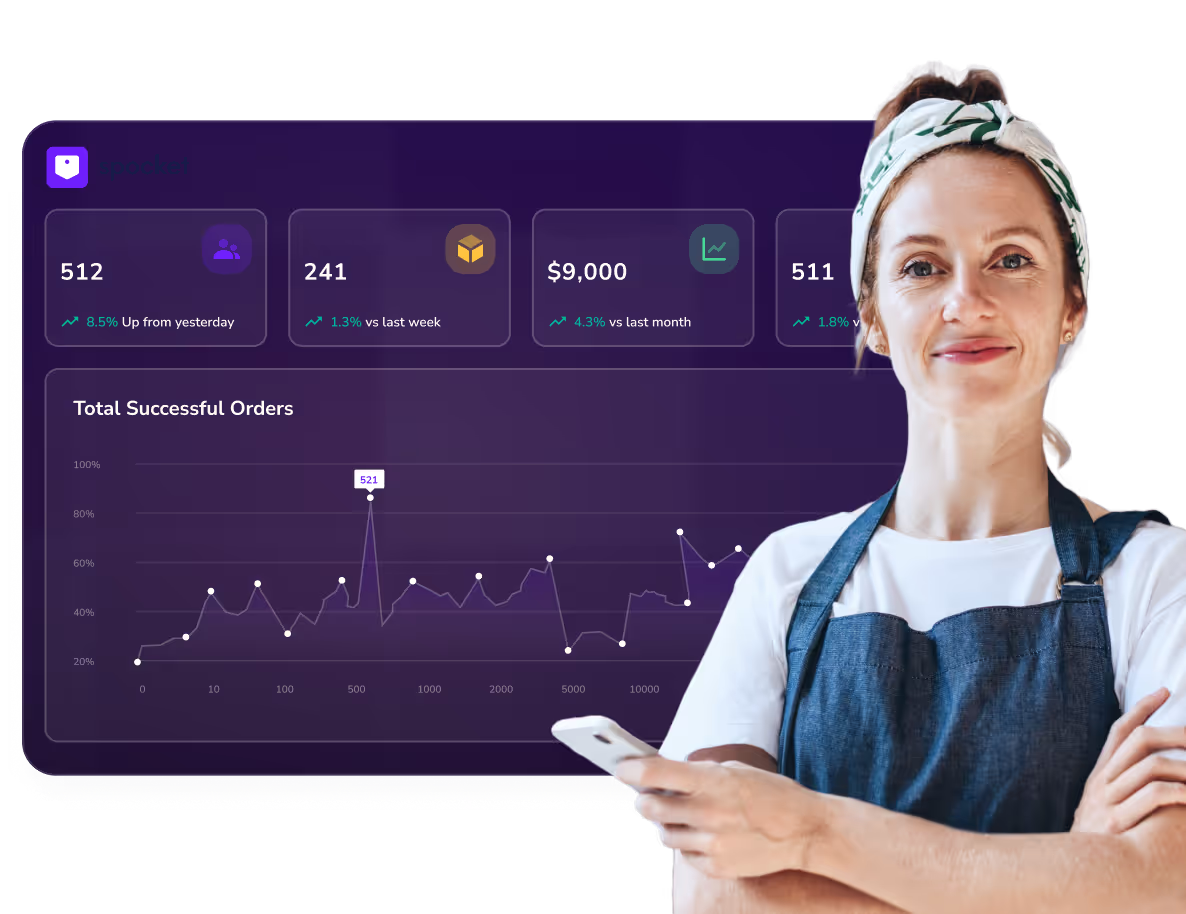Brexit marked a historic shift for the United Kingdom, reshaping trade, logistics, and e-commerce operations across the country. While it created new opportunities for local entrepreneurs, it also introduced a wave of dropshipping challenges in the UK that sellers continue to navigate today.
For years, UK dropshippers benefited from frictionless trade within the European Union. Products could move across borders without customs delays, tariffs, or complex VAT processes. But after Brexit officially took effect on January 1, 2021, that smooth system changed dramatically. New trade agreements, customs checks, and VAT regulations introduced new layers of complexity for businesses that rely on cross-border supply chains.
From delayed shipments and higher costs to supplier withdrawals from the UK market, the transition has tested even experienced dropshippers. This article explores the key challenges UK dropshippers face today, how Brexit reshaped supplier and fulfillment networks, and what strategies can help e-commerce entrepreneurs thrive in this new environment.

Understanding the Key Dropshipping Challenges in the UK Post-Brexit
The UK’s withdrawal from the European Union fundamentally altered how goods move between the UK and EU member states. For dropshippers, who rely heavily on third-party suppliers and seamless logistics, these changes introduced multiple operational hurdles. Understanding these dropshipping challenges in the UK is crucial for creating a stable, long-term business strategy.
1. Disrupted Supply Chains
Before Brexit, UK dropshippers could easily partner with suppliers across the EU. Now, the introduction of customs checks and additional paperwork has slowed down the flow of goods. Many EU suppliers are reluctant to serve UK customers because of increased administrative burdens, resulting in fewer available product options and longer restock times.
2. Increased Delivery Times
What once took a few days can now take weeks. Border inspections, customs clearance, and logistical bottlenecks have all contributed to longer delivery times for UK consumers. In an era of fast fashion and instant gratification, delays can quickly translate into poor customer experiences and lower retention rates.
3. Import VAT and Customs Duties
One of the biggest post-Brexit pain points for dropshippers is handling import VAT and customs duties. Every product entering the UK from the EU is now subject to new tax obligations. Dropshippers who fail to calculate these costs accurately risk losing profit margins—or worse, frustrating customers with unexpected fees upon delivery.
4. Increased Operating Costs
Additional administrative work, customs brokerage fees, and higher shipping costs have all raised the cost of doing business. Even simple processes like returns have become more expensive because products crossing borders now involve double customs handling.
5. Compliance Complexity
With new trade laws, product labeling standards, and VAT thresholds, compliance has become more challenging than ever. Many small dropshippers are struggling to keep up with changing requirements, especially those selling to multiple EU countries from the UK.
While these challenges have disrupted traditional operations, they’ve also opened new opportunities for adaptation. Many UK dropshippers are now shifting toward hybrid models that combine local suppliers with AI-powered automation to maintain competitive speed and quality.
How Brexit Affected Supplier Relationships and Fulfillment
Before Brexit, UK dropshippers had seamless access to thousands of EU-based suppliers. Orders could move freely across borders, and fulfillment times were predictable. However, the post-Brexit reality has changed that landscape entirely. The new trade framework has forced both suppliers and merchants to rethink how they collaborate, how products are shipped, and how returns are managed.
1. Supplier Withdrawals from the UK Market
Many EU suppliers, particularly smaller ones, have stopped shipping to the UK altogether. The added burden of customs documentation, VAT registration, and export declarations made it impractical to continue cross-border fulfillment. As a result, UK dropshippers have seen a noticeable reduction in supplier availability and product diversity.
2. Higher Fulfillment and Shipping Costs
The cost of cross-border logistics has risen sharply since Brexit. Carriers now charge additional customs handling fees, and goods often face delays at checkpoints. These factors have inflated the overall cost of order fulfillment, reducing profit margins for UK sellers who source from EU-based partners.
3. Complex Returns and Refunds
Returns—already one of the most expensive parts of e-commerce—have become more complicated. A simple return to an EU warehouse can now require customs re-declaration, import charges, or additional documentation. This not only increases costs but also discourages customers from making repeat purchases if they experience shipping frustrations.
4. Supplier Communication Gaps
With added legal and tax complexities, communication between UK dropshippers and EU suppliers has become more critical—and more strained. Misunderstandings around customs values, shipping responsibilities, and VAT thresholds can cause fulfillment errors and compliance risks.
5. Rise of Local and Hybrid Sourcing
To overcome these challenges, many entrepreneurs have started to build hybrid sourcing models—using a mix of local UK-based suppliers and international ones. This ensures faster delivery to domestic customers while still offering diverse product catalogs. Platforms like Spocket have been key in this transition, connecting sellers with verified UK and EU suppliers who are already compliant with post-Brexit standards.
In essence, Brexit has made it harder to maintain supplier relationships purely across borders. But with the right partners and automation tools, UK dropshippers can rebuild their networks for stability, compliance, and speed.
The VAT and Customs Dilemma for UK Dropshippers
Brexit replaced friction-free EU trade with a patchwork of VAT, customs, and courier handling rules that now sit between you and your customer. For UK dropshippers, the biggest operational risk isn’t finding products—it’s pricing and promising delivery accurately once tax and duty enter the picture.
The £135 Import VAT Threshold—What It Actually Means
The UK applies a special rule to consignments valued at £135 or less (goods value excluding shipping and insurance):
- At or below £135: VAT is generally collected at the point of sale. That means you (or the online marketplace, if deemed supplier) charge UK VAT to the buyer and remit it to HMRC. There’s no import VAT on arrival because it’s already been accounted for.
- Above £135: VAT (and any customs duty, if applicable) is collected at the border. Couriers often pay it on the customer’s behalf and then invoice you or your buyer a clearance/handling fee.
Why this matters: If you don’t configure prices and checkout to handle the threshold correctly, you can either overcharge (hurting conversion) or undercharge (eroding margin when the courier’s bill arrives).
Who Collects VAT? (You, the Marketplace, or the Courier)
- Your own site (Shopify/WooCommerce): You’re typically responsible for charging the correct UK VAT at checkout on ≤£135 consignments and remitting it to HMRC.
- Marketplaces (eBay/Amazon/etc.): They’re often the “deemed supplier” and will collect and remit UK VAT for you on ≤£135 consignments shipped into the UK.
- >£135 consignments: Import VAT (and any duty) are due on entry; the importer of record (you or your buyer, depending on Incoterms) is liable.
EORI, HS Codes, and Paperwork—The Essentials
To keep parcels moving and costs predictable, make sure you have the right identifiers and data:
- GB EORI number: Required if you (or your UK entity) act as the importer.
- Accurate HS (commodity) codes: Drive the duty rate and admissibility; wrong codes create delays and surprise costs.
- True customs value: Declare product value correctly (ex-VAT product price; separate freight/insurance as needed).
- Commercial invoice/CN22/CN23: Must match what you charged and what’s in your system.
DDP vs DAP—Choose Your Customer Experience
- DDP (Delivered Duty Paid): You prepay import VAT/duty and any courier fees. The customer pays nothing on delivery—great experience, predictable costs, lower dispute rates. Margin must include these landed costs.
- DAP (Delivered At Place): Customer pays VAT/duty/handling on arrival. It’s simpler operationally but risks negative reviews if buyers feel “stung” by unexpected fees.
Recommendation: For fashion, gifts, and impulse categories, DDP consistently tests better for conversion. If you use DAP, make the charges ultra-clear pre-checkout.
Pricing It Right—A Quick Example
Assume a cardigan costs you £18 ex-VAT from an EU supplier, you sell at £39, and ship to a UK customer:
- If the consignment value is ≤£135:
- Charge UK VAT at checkout (e.g., 20% on £39 → £6.50 VAT).
- Remit that VAT to HMRC in your return.
- Parcel should clear without import VAT.
- If the consignment value is >£135:
- No VAT at checkout (unless you offer DDP).
- Import VAT due at the border (courier collects).
- If DDP, you (or your broker) pay and bake it into margin; if DAP, warn the customer clearly.
Returns Got Harder (and Pricier)
Cross-border returns can trigger re-import VAT, new declarations, and extra courier fees. Reduce pain by:
- Offering local UK return addresses (3PL or consolidated returns).
- Using return merchandise authorization (RMA) numbers so customs can treat goods as returns and mitigate taxes where rules allow.
- Tightening size/fit info and using AI sizing/reviews to cut return rates.
Northern Ireland Note (Keep It Simple)
NI follows different rules for goods under the Windsor Framework; if you ship there regularly, set separate tax zones/shipping profiles and lean on your platform’s tax engine or a compliance app.
Making Compliance Boring (in a Good Way) with Process and Tools
- Tax engine setup: Configure UK VAT by threshold and product tax rates in Shopify/WooCommerce.
- Document automation: Ensure invoices/commercial docs pull correct HS codes, values, and Incoterms.
- Courier rules: Store carrier-specific surcharges for clearance/advancement fees in your landed-cost model.
- Reporting cadence: Monthly VAT checks against orders/refunds; reconcile courier import statements to catch leakage.
Where Spocket Fits In
Spocket lightens the load in a few practical ways:
- UK/EU supplier access: Source locally where possible to avoid border friction entirely for UK customers.
- Supplier vetting and clear data: Better product data means fewer customs surprises (accurate descriptions, values, origins).
- Branded, VAT-aware invoicing: Cleaner documentation reduces clearance delays and keeps customer pricing transparent.
- Simple multi-market setup: When you do sell cross-border, pair Spocket’s supplier network with your tax app to keep rates and rules straight.
Opportunities Emerging from Brexit for Local Dropshippers
Despite all the uncertainty, Brexit has created new and unexpected opportunities for UK dropshippers. While the immediate aftermath was marked by disrupted logistics and compliance challenges, many local entrepreneurs have used this moment to rethink their strategies — focusing on localization, branding, and speed.
Growing Preference for UK-Made Products
British consumers have become more inclined to support homegrown businesses and products. This shift gives UK-based dropshippers an edge when they partner with local suppliers who can deliver faster and highlight the “Made in the UK” label — a symbol of quality and trust.
Reduced Competition from EU Sellers
Prior to Brexit, UK markets were flooded with EU-based sellers offering competitive pricing. Post-Brexit regulations and customs requirements have discouraged some of these sellers from targeting UK buyers, giving domestic entrepreneurs more room to grow.
Faster Domestic Fulfillment
By focusing on UK suppliers, dropshippers can now ensure next-day or 2-day delivery, which aligns with customer expectations shaped by giants like Amazon. This localized approach not only improves customer satisfaction but also strengthens brand loyalty.
Rise of Niche and Sustainable Brands
The UK market is evolving toward niche categories and sustainable fashion. Entrepreneurs can leverage this trend by combining AI tools for predictive product insights with dropshipping platforms like Spocket to source eco-friendly, high-quality items that appeal to modern consumers.

Strategic Expansion Beyond the EU
Brexit has also pushed many dropshippers to diversify their supplier base globally — sourcing from the US, Australia, and Asia while selling to both UK and EU customers. This global mindset has opened access to a wider audience and reduced dependency on any single trade route.
In short, while Brexit brought its share of challenges, it also forced UK dropshippers to evolve. By embracing agility, focusing on local sourcing, and using data-driven tools, many have turned adversity into opportunity.
Building a Brexit-Proof Dropshipping Strategy
The post-Brexit landscape has shown that success in e-commerce isn’t just about finding great products — it’s about building resilient systems that can adapt to change. For UK entrepreneurs, creating a Brexit-proof dropshipping strategy means combining smart sourcing, compliance, and automation to ensure smooth operations no matter how trade policies evolve.
Here’s how to future-proof your dropshipping business in a post-Brexit world:
1. Diversify Your Supplier Network
Depending on a single supplier or region is risky in the current trade climate. The smartest UK dropshippers now use multi-region sourcing, combining:
- Local UK suppliers for fast, customs-free delivery.
- EU suppliers for product diversity and quality.
- Global suppliers (US, Canada, Australia) for niche products and seasonal flexibility.
With platforms like Spocket, diversifying your supplier network is easy — you can filter suppliers by region, shipping times, and product category, ensuring your business stays agile.
2. Automate Tax and Compliance Processes
Brexit introduced complex VAT and customs requirements that can overwhelm small business owners. The solution? Automation. Use Spocket’s VAT-compliant invoicing, alongside accounting tools that integrate with your store, to eliminate manual errors and stay compliant with HMRC regulations.
3. Be Transparent About Shipping and Costs
Customers appreciate honesty, especially when it comes to delivery times and potential customs charges. Include clear shipping timelines, estimated fees, and return policies on your product pages. Using Spocket’s vetted suppliers ensures reliable delivery estimates — a key factor in maintaining customer trust.
4. Focus on Local Branding and Customer Experience
Brexit has increased consumer loyalty toward UK-based businesses. Build your brand identity with custom-branded packaging and invoicing through Spocket, and emphasize your connection to UK values such as quality, trust, and sustainability. A strong local brand can outperform even global competitors.
5. Stay Informed and Adapt Quickly
Trade laws, VAT rules, and import processes continue to evolve. Subscribe to government updates, monitor platforms like Shopify and Webinterpret, and stay flexible. Use data analytics to monitor sales performance, track supplier reliability, and pivot your sourcing strategy when needed.
Final Thoughts
Brexit has undeniably reshaped the e-commerce landscape in the United Kingdom. While it introduced new complexities like customs checks, VAT compliance, and supplier challenges, it also opened up opportunities for innovation, localization, and smarter business practices. The key to success now lies in how well dropshippers adapt to these changes — and the tools they choose to navigate them.
Platforms like Spocket are transforming the way UK entrepreneurs approach dropshipping. By connecting sellers with verified UK and EU suppliers, automating VAT-compliant invoicing, and simplifying cross-border fulfillment, Spocket eliminates the friction caused by Brexit’s red tape. What once felt like an obstacle can now become a competitive advantage for sellers who leverage efficiency, reliability, and brand trust.
As the UK continues to redefine its trade identity, one thing is certain — the future of dropshipping belongs to those who stay agile, automate intelligently, and focus on long-term sustainability.






































